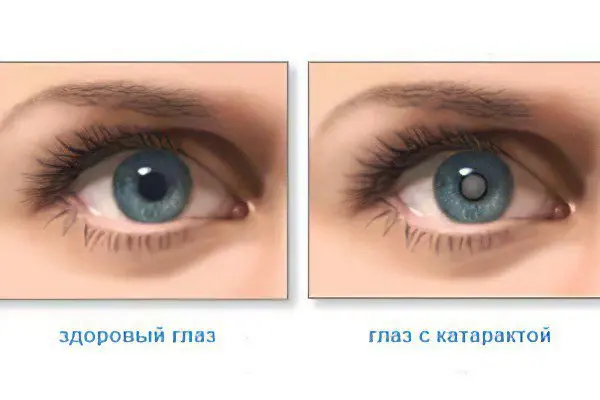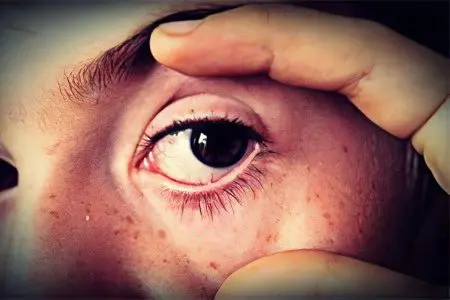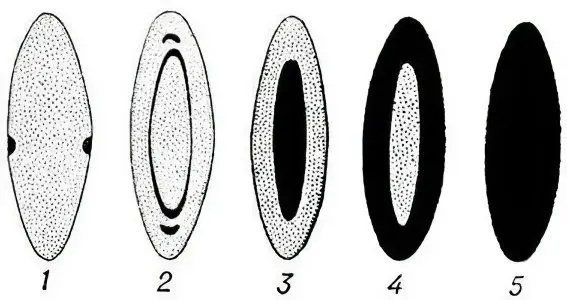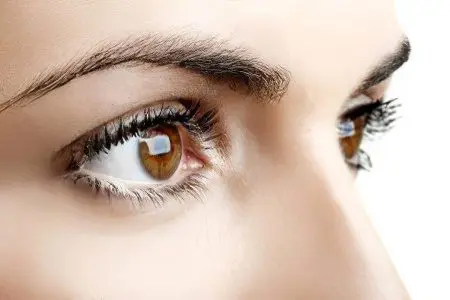Contents
What is a cataract?

Cataract of the eye – This is a disease that is characterized by either complete or partial clouding of the substance of the lens of the eye, or its capsule. Pathology is accompanied by a decrease in vision, or its loss.
Despite the fact that cataracts are most common in adults over 50 years old, this disease is still characteristic of any age. There are several types of cataracts. These include traumatic, congenital, complicated and radiation cataracts.
The development of cataracts can be somewhat delayed, however, the older the person, the more likely it is to detect this pathology of vision.
Cataract symptoms
Cataract has several degrees of damage and the symptoms will vary depending on this, however, the main ones include:
The occurrence of double vision in the case when the second is closed at this time. This is an early symptom, as the disease progresses, it disappears.
Fuzziness of the picture, vagueness of images, which is not corrected with the help of contact lenses and glasses. At the same time, both near and far objects are poorly visible. Patients characterize such vision as blurred, with the formation of a veil.
The appearance of flashes and glare, occurring mainly at night.
Increased light sensitivity of the eye at night. In general, night vision deteriorates. All light sources seem to the patient to be excessively bright, irritating to the eyes.
When viewing light sources, a person with a cataract sees halos around him. A person with a clouded lens is not able to drive a car, or it is difficult for him, as he is blinded by the headlights of oncoming traffic.
The perception of color is disturbed, they all become paler. It is especially difficult for a person to perceive shades of purple and blue.
Improvement in vision, which is temporary. This symptom is characterized by the fact that a person who previously wore glasses, with the development of the disease, may refuse them. However, this time period is short and vision will begin to deteriorate again.
If a person often needs to change glasses for vision, there is reason to think about cataracts, since this disease tends to progress and quickly reduce visual acuity.
Symptoms of cataract becomes the appearance of stripes and flashing spots or various balls. The ancient Greeks called this disease a waterfall, because with a cataract, a person has a feeling that his eyes are covered with a veil, and he looks as if through a misted glass.
With cataracts, it is difficult to read, write, work with small details. As the cataract matures, the color of the pupil becomes white instead of black.
Signs of a cataract

The first sign that allows a doctor to suspect a cataract in a person is the patient’s age over 60 years. In this case, the clinical picture has characteristic features. On examination, the ophthalmologist observes opacities that can be located in different parts of the eye: in the peripheral lobe of the lens, or opposite the pupil. Turbidities are grayish in nature, sometimes with a white tint.
Depending on the type of cataract, the ophthalmologist will observe a varied clinical picture, accompanied by such signs:
Anterior cataract appears as a white spot with clearly defined borders. When it is slightly pushed forward and pointed, then such a cataract is called the anterior pyramidal.
If the opacity is located at the posterior pole of the lens and is presented in the form of a round white ball, then we speak of a posterior polar cataract.
The central cataract is determined by such signs as: spherical appearance, location – the center of the lens, diameter – 2 mm.
A fusiform cataract can be judged by its shape. Such opacification is presented in the form of a thin spindle, it is located along the entire length of the lens.
Zonular congenital cataract has the appearance of a cloudy nucleus with transparent layers.
Clouding of the entire lens, liquefaction of its masses and further formation of a dense bag are signs of a dense soft cataract.
Diabetic cataract is characterized by the appearance of white opacity in the form of flakes. They are located on all surfaces of the lens, often there is a change in the iris.
Tetanic cataract is characterized by the same symptoms as its diabetic variety and is determined by the signs of the disease that caused it (hypofunction of the parathyroid glands).
Toxic cataract most often manifests itself as opacities located under the lens capsule, with subsequent spread to the cortical layers.
Senile cataract has many signs and depends on the degree of progression of the disease: initial, swelling, mature and overripe.
These are the most common signs that make it possible to characterize a cataract and attribute it to one or another type.
Causes of cataract

There are several positions that determine the etiology of the occurrence and development of cataracts. Among them are the following:
Diabetes mellitus leading to the development of diabetic cataracts and other pathologies of the thyroid gland. In particular, titanium, muscular dystrophy and others.
Smoking and long-term alcohol abuse.
Eye injury.
Taking drugs belonging to the group of corticosteroids.
Prolonged exposure to sunlight on the eyeball.
The age of the person. The older he gets, the lower the body’s ability to resist toxins from the external environment. In addition, the level of antioxidants provided by nature is reduced.
Retinal detachment, iridocyclitis, chorioretinitis, Fuchs’ syndrome, glaucoma and some other diseases lead to disruption of the lens metabolism and to the development of cataracts.
Severe infections, such as malaria, typhoid, smallpox and others.
Anemia.
Poisoning of the body, in particular thallium, naphthalene and other toxic substances.
Skin diseases, which include eczema, poikiloderma Jacobi, scleroderma, neurodermatitis.
Eye burns.
Myopia 3 high degree.
A hereditary factor cannot be ruled out.
Down’s disease.
Congenital cataracts often occur against the background of the fact that the pregnant woman has suffered severe infections, such as rubella, toxoplasmosis, influenza, etc.
Work in hot workshops where the risk of eye exposure is high.
According to some sources, more than 20 people in the world have this disease as the onset of blindness.
The cause of cataracts can also be poor ecology, poisoning with various toxic drugs, ultraviolet or radiation exposure, microwaves and smoking.
What to do if a cataract appears?
First of all, when the first symptoms of cataract appear, you should consult a doctor. This problem is diagnosed by an ophthalmologist. Using a slit lamp, he will examine and check the visual acuity of the patient. This will reveal the pathology of the lens of the eye. To determine the complications in the fundus, the ophthalmologist will conduct his study, having previously expanded the pupil with the help of drops.
When making a diagnosis of cataract, you should not delay treatment, even if vision is not impaired. It should be understood that this disease tends to progress, and the more the lens becomes cloudy, the worse the person will see.
The developing cataract affects the patient’s quality of life and will eventually lead to complete blindness if not treated. In addition, prolonged neglect of therapy can lead to the growth of opacity, increased intracranial pressure and the development of glaucoma. Next, the optic nerve dies off, which ceases to irradiate nerve impulses to the brain.
So, the only correct answer to the question: “What to do if a cataract appears?” Is to go to an ophthalmologist for diagnosis and start treatment as soon as possible.

There are 5 stages of cataract:
anterior and posterior capsular cataracts;
perinuclear layered cataract;
nuclear cataract;
cortical cataract;
complete cataract.
The initial stage of a cataract is characterized by the appearance of clouding of the lens outside the optical zone.
Opacification completely closes the lens in a mature cataract. With this form of the disease, a person can only distinguish light illumination. Clouding of the lens occurs along the periphery, that is, outside the optical zone.
There is an immature cataract, which is characterized by clouding in the central part of the optical zone of the eye. In this case, visual acuity is impaired. An immature cataract manifests itself in such a way that opacities move into the central optical zone. In an immature cataract, clouding of the lens leads to a marked decrease in visual acuity.
There is also an overripe type of cataract. In this case, the lens becomes milky white, as the substance of which it is liquefied.
How fast do cataracts mature?
According to studies, on average, twelve percent of people who have cataracts progress to a very serious stage within four or six years. Fifteen percent of patients have a slow progression of the disease over ten to fifteen years. In seventy percent of patients, cataract progression occurs within 6 to 10 years. Mandatory surgical intervention is required.
Complications of cataract
If a cataract was not diagnosed and treated in time, then it can lead to complications such as:
Complete blindness or amaurosis. It is the cataract that is in the first place among the diseases leading to the absolute loss of vision. At the same time, blindness does not come on suddenly, it comes on gradually. If you start treatment on time, then this complication can be avoided. Amaurosis is diagnosed when vision is completely lost.
Lens dislocation. This complication is characterized by the fact that it is completely displaced and detached from the holding ligament. At the same time, vision deteriorates sharply, and the lens itself must be removed.
phacolytic iridocyclitis, which manifests itself in inflammation of the ciliary body and iris. A person experiences severe pain in the eye and head, the vascular network becomes cyanotic or red, the pupil does not move well. When the acute process is eliminated, the question arises of removing the lens.
Phacogenic glaucoma characterized by a secondary increase in pressure inside the eye due to the fact that the lens increases in size. The lens needs to be removed and therapy is carried out to reduce pressure.
obscurative amblyopia. This complication often manifests itself in children and becomes a consequence of congenital cataracts. It is characterized by the fact that the retina, which does not receive signals from the outside, atrophies and ceases to function, although it was healthy before. The only treatment for this complication is surgery.
To avoid such formidable complications, the disease must be diagnosed and treated in time under the guidance of professional doctors. Seek help when the first symptoms appear.
How to cure a cataract?

In order to cure a cataract, you can not delay the appeal to the doctor. Therapy can be conservative, in some cases surgery is indicated. As for medications, doctors prescribe drops to the patient that improve metabolism inside the lens. Stimulation of metabolism contributes to the fact that the process of formation of turbidity slows down. If there is a break in the therapeutic effect, the disease begins to progress again.
In most cases, cataracts are treated with surgery. Modern medicine has reached such heights that a person does not even have to go to the hospital. Most operations are performed on an outpatient basis and after a short period of time the patient is sent home.
The methods that are used for the surgical treatment of the disease are varied. The previously used method of intracapsular haze extraction has gone down in history, as it is fraught with the development of complications and often led to patient injuries. A more modern method of surgical intervention is extracapsular cataract extraction, during which the cloudy masses are completely removed. In this case, the lens capsule is preserved and replaced by a flexible and rigid intraocular lens.
An even more modern method is the removal of cloudy masses using ultrasound. Then an intraocular lens is inserted. This surgical procedure is called phacoemulsification. The procedure itself takes little time and is completed in 10 minutes. In this case, a person does not require the introduction of general anesthesia, local anesthesia is sufficient. After phacoemulsification, the patient is prescribed drops and observation by an ophthalmologist at the place of residence.
In order for the postoperative period to end faster and not cause complications, the patient is prescribed special drops:
Floksal, Oftaviks, Torbeks have an antibacterial effect.
Contribute to the removal of inflammation Diclof, Indocollir.
If the eye experiences increased dryness, then tear substitutes are prescribed, for example, Oksial or Sistane.
Drops containing hormones include Maxidex and Oftan-dexamethasone.
To avoid complications, it is necessary to follow the recommendations of the ophthalmologist, which boil down to a ban on lifting weights and being in dusty rooms. You should also be wary of hypothermia and walking in windy weather.
Do not start your illness, because with advanced forms of the disease, complete loss of vision is possible, which cannot be returned. When a cataract is advanced, the lens swells, and this becomes an obstacle to the outflow of fluid inside the eye.
Eye drops from cataracts
For the treatment of cataracts, a variety of drops are used to stop the development of the disease and prevent complications after surgery. All of them can be prescribed only by an ophthalmologist. Self-treatment of the disease is unacceptable.
Katalin

Catalin, developed and produced in Japan, is a unique drug for the prevention and treatment of age-related and diabetic cataracts.
Thanks to the active substance of the drops – Pirenoxin, the process of converting the water-soluble proteins of the lens into opaque substances (creating a feeling of a veil on the eyes) stops and thus its transparency is preserved.
Due to the regression of the clouding of the lens, during the application of drops, there is a decrease in blurred vision, normalization of photosensitivity, and the feeling of doubling of objects in the eyes disappears. The drug is well tolerated.
Catalin is applied continuously, 1-2 drops per eye up to five times a day.
A significant therapeutic effect of Catalin is observed after 3 months. after the start of application.
Catalin is suitable for people diagnosed with early age-related cataract; people with the appearance of cataracts as a consequence of complications from diabetes; people who are contraindicated in cataract surgery; as a prevention of complications after cataract surgery.
Oftan Katahrom

These are eye drops with an antioxidant and metabolic effect that slow down the development of cataracts due to the combined composition. The drug is produced in Finland and has been sold on the Russian market for more than 10 years. It contains substances such as nicotinamide, citrom C, adenosine and others. The use of this remedy contributes to the fact that the metabolism in the lens is normalized, the processes of restoration and oxidation are activated. Drops act as an antioxidant. The advantage of using the remedy is that they are not absorbed by the bloodstream, and the effect occurs in less than a minute.
You can use drops while carrying a child, but only after consulting a doctor. The most common side effects are allergic reactions, some stinging and burning sensation in the eyes. Very rarely, dizziness, increased blood pressure and nausea can be observed. Sometimes a person suffers from fainting and shortness of breath.
You can not use the tool in children under the age of majority, as well as in case of hypersensitivity to the components that make up the drops. It is important to refrain from wearing soft contact lenses. If irritation occurs, then until the moment of its disappearance, you should not drive a car and work with other potentially dangerous equipment.
Quinax
Drops used for the treatment of cataracts, which promote the resorption of proteins that form in the lens of the eye. In addition, Quinax promotes the activation of enzymes contained in the moisture of the anterior chamber of the organ of vision. The advantage of drops is that they have low absorption, have no side effects and do not interact with other drugs. Drops can be used during pregnancy and in children only after consulting a doctor.
It is important to use the remedy for a long time, even if the therapeutic effect occurs in the shortest possible time. Do not instill Quinax without first removing contact lenses. After making the drug, you should wait at least 15 minutes and only then put the lenses in place. If there is a temporary visual impairment after instillation, you should refrain from work related to eye strain. The use of drops is indicated for senile, congenital, traumatic and secondary cataracts.
Taufon
Drops used for the treatment and prevention of cataracts, which trigger regenerative processes in the tissues of the eye. Taufon contributes to the normalization of metabolism in the eyeball, improves metabolic processes. With cataracts, the course of treatment should be at least 3 months. As side effects, the possible occurrence of allergic reactions is distinguished.
Drops can be used for traumatic, senile, radiation and other types of cataracts. It should not be used in childhood, as well as in the presence of hypersensitivity to the main active substance (taurine). It can be purchased at a pharmacy without a prescription.
Vizomitin “Drops of Skulachev”
Drops are used to prevent dry eye syndrome, often prescribed in the postoperative period. They help produce their own tears, improve the composition of the tear film. The duration of use depends on the severity of the symptoms and is determined by the attending physician. If necessary, the drug can be used with other eye drops, including for the treatment of cataracts. However, it is worth maintaining the interval between depositing funds for at least 5 minutes.
Side effects other than allergic reactions are not noted. Do not use during lactation and during gestation. Drops after opening the vial remain usable for 30 days. The age limit is 18 years old. A prescription is required to purchase.
Eye drops 999 for cataracts and glaucoma
A preventive and therapeutic agent that can relieve eye strain from the eyes, remove cataracts, tone the elements of the eye, and reduce intraocular pressure. Do not use for severe eye pain, with an allergic reaction. If there are eye infections, then you must first consult with an ophthalmologist.
It should be understood that the drug is not able to replace drug treatment, and serves as a prophylactic agent with some healing effect.
Prevention of cataracts

When there is a risk of developing cataracts, it is important to use comprehensive preventive measures. These include the use of drops (Quinax, Taufon, Vicetin, etc.), after prior consultation with the doctor.
Other preventive measures are as follows:
Mandatory visit to the ophthalmologist at least 2 times a year.
Wearing sunglasses that can block ultraviolet light from reaching the lens of the eye.
Eating foods rich in antioxidants, as well as fruits and vegetables.
Regular measurements of blood sugar levels and timely treatment of diabetes mellitus.
Compliance with safety measures when working with potentially hazardous substances, in hot shops, chemical laboratories, etc.
Frequent washing of hands, which allows you to somewhat protect the organs of vision from infection of various origins, which reduces the risk of developing cataracts.
Getting rid of bad habits.
However, doctors note that there are no universal methods for preventing the disease. Therefore, people over 65 should definitely visit an ophthalmologist regularly and, if clouding of the lens is detected, treat this pathology in a timely manner. As for people who have not crossed this age limit, they need to visit a doctor at least once every 4 years and follow a balanced diet.
Author of the article: Degtyareva Marina Vitalievna, ophthalmologist, ophthalmologist









